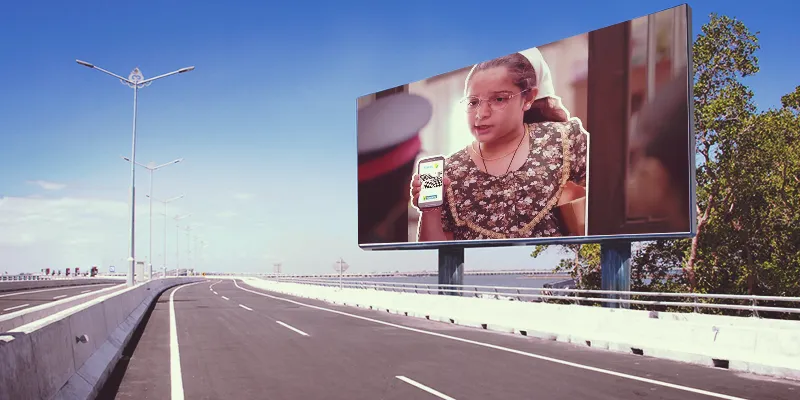How Flipkart marketed itself for the Big Billion sale
October–November is the festival season in India. Durga Puja and Diwali are also celebrated by retail businesses in the country. This is the time when money can buy happiness for the average Indian. Till a few years ago, brick and mortar stores were crowded during the season. Cut to the present: online stores are also celebrating with mad rush from tech savvy customers.
Indian e-commerce’s poster child Flipkart launched its Big Billion Day sale in 2014 around a festival season. Although the effort did not meet expectations due to technical glitches, it started a trend. Last year, Flipkart’s competitor Snapdeal and US-based rival Amazon launched similar efforts at the same time.
Thanks to growing digitisation and internet penetration, the platforms are ready to serve millions. But beyond the metro cities, how many trust online purchases? That’s where marketing takes over. New age tricks and strategies in marketing are changing the scope of Indian retail, and the coming week will demonstrate its success rate.

Flipkart is throwing its dice again with the Big Billion sale from October 2–6, the preparations for which began long ago. Going up against the Big Billion sale are ‘Snapdeal Unbox’ and the ‘Amazon Great Indian Sale’. In an interaction with YourStory, Samardeep Subandh, Chief Marketing Officer at Flipkart, went into details.
Shaping the ecosystem
In the last few years, Flipkart has played a major role in shaping the industry with many initiatives, starting from cash-on-delivery services which took online commerce to the masses. “We focus on making more great quality products affordable and accessible, along with bringing online brands like Lenovo, ASUS, and Motorola exclusively on Flipkart. Even in fashion, we brought in many footwear brands into partnerships,” says Samardeep.
Quality and affordability — these are the objectives of the recently launched service Flipkart Assured. Its algorithm, Samardeep says, enables good quality products to be delivered as fast as possible. Flipkart Assured now delivers lakhs of products in two to four, which Samardeep says makes people shop more often.
In June 2016, Flipkart introduced No-Cost EMIs, with no interest for buyers on products of ticket sizes of Rs 5,000 and above. Samardeep says that 30 percent of units in the high value category now get sold to customers using this service.
Signature campaign

The last few months have seen active advertising by Flipkart, the most prominent of which was the ‘Kids are Back’ campaign. Despite controversy, the ad strikes a chord with the audience.
What is the charm of children in the ad for an e-commerce company? Very few brands — Amul and Nirma being a couple — have been able to create a unique communication device. For a horizontal player, Samardeep believes, the kids’ theme helps connect multiple products to customers in an engaging way. He says,
“Kids convey the message of simplicity and convenience of e-commerce. It was after months of discussion that we went ahead with the kids’ theme, which was first launched in 2011.”
In an effort to build confidence among customers in tier 2 and tier 3 cities, who rarely shop online, Flipkart had launched the ‘Flipkart matlab bilkul pakka’ campaign in March.
Rising expenses
With the scale that e-commerce has now achieved, Flipkart’s marketing expenses have also risen over the years. Although he did not reveal the exact figures, Samardeep mentioned that there is about a 30 percent rise in marketing expenses per year. He adds, “Most online shoppers follow social media. Although we advertise across TV and print platforms, we found a way to back the digital shopper footprint.”
To put things into perspective, Snapdeal recently announced Rs 200 crore in marketing, which was immediately followed by rebranding with a new logo and ads. Amazon reportedly lost Rs 1,724 crore in FY15 in India due to high expenses in advertising. In June this year, Paytm also announced Rs 600 crore in branding and marketing this fiscal year.
According to a study by TAM Media research, Amazon spent the most on advertising so far this year, while ShopClues spends 40 percent of their budget on digital marketing. Last year, the study says, Amazon spent Rs 224 crore on advertising during the festive sales whereas Flipkart spent Rs 70 crore.
Finding out customer expectations
Flipkart claims to have a deep understanding of consumer interests — from their shopping patterns and wish lists to history of categories and products.“Customers want quality and delivery. Annual and biannual surveys show individual category preferences too,” says Samardeep. He adds that shoppers expect Flipkart to come up with Big Billion sales.
The 70-member marketing team at Flipkart has drafted plans depending on the changing customer behaviour. Samardeep says,
“We want to assure our customers of our products’ quality, speed, and convenience of delivery. We are constantly trying to make products affordable and accessible for exchange. Lots of people want to upgrade to better products; we make it easier with verification.”
At the Big Billion sales, Flipkart is expecting more first-time buyers. Samardeep says, “We get 20–30 percent new buyers during regular weeks too, but the numbers come up to 5x in the Big Billion sales. The proportion will not change, but the numbers will.”
In 2015, the Big Billion sale was available only on Flipkart’s app, as they were leaning towards an app-only strategy. This year, however, the sale is also available across their website, mobile site, and app to cater to a wider audience. Flipkart reportedly earned $300 million from last year’s Big Billion sales. With more marketing and 100 million registered users, will Flipkart win the battle against Amazon and Snapdeal? Watch this space to find out.







